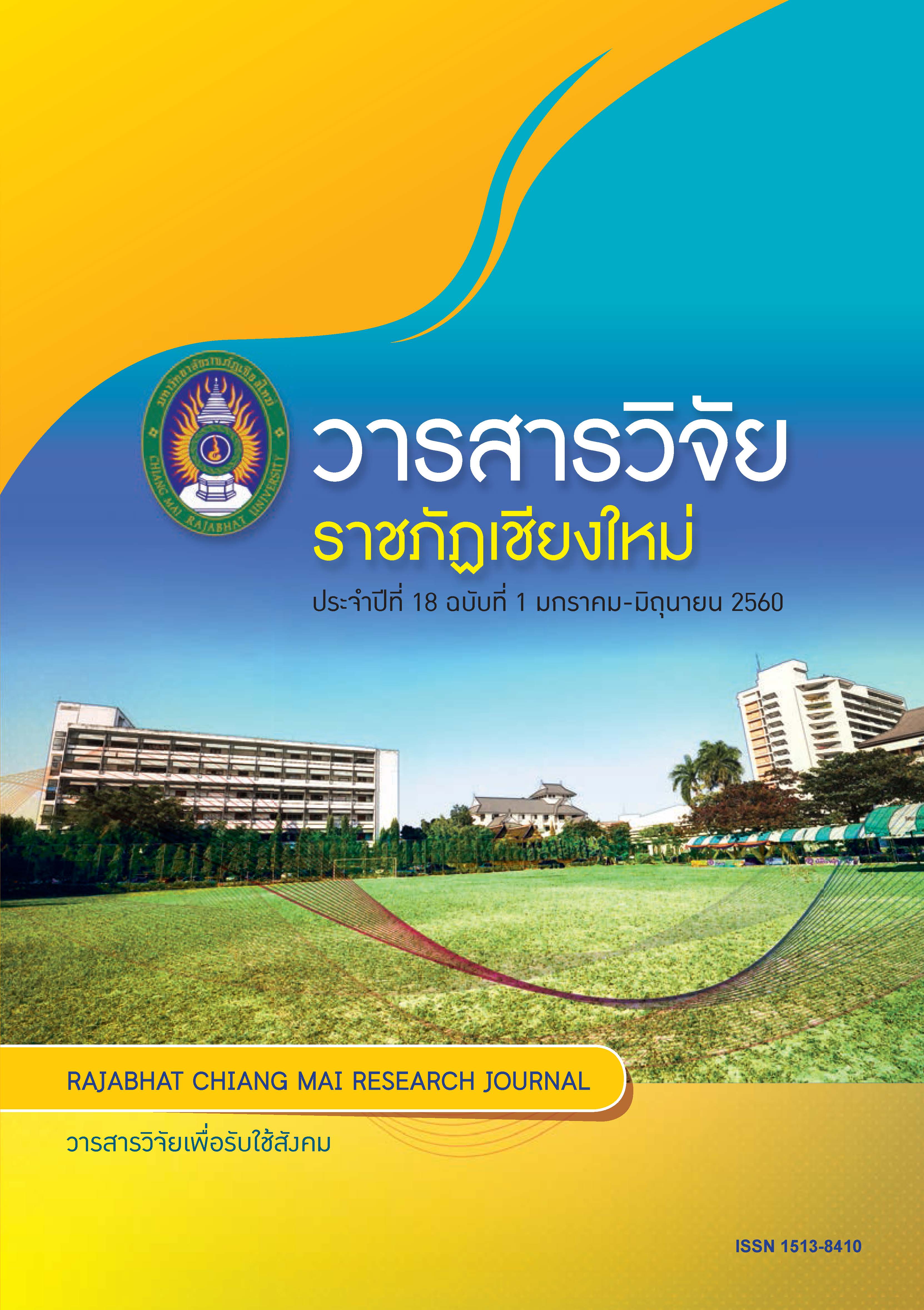A Model of Integrated Buddhist Participation in Irrigation Management of Water – Users Organization in the Lower Northern Basin
DOI:
https://doi.org/10.14456/rcmrj.2017.213858Keywords:
management, irrigation system, integrated Buddhist participationAbstract
This study is a mixed methods research used household population was conducted by inquiring the above mentioned water-users organization consisting of a chairman, a committee and general water users living in Nong Ping Kai community of the 4 villages, i.e. Moo 2 Baan Nong Ping Kai, Moo 13 Baan Morecharoen, Moo 19 Baan Salapongdaeng and Moo 22 Baan Soysuwan, Muang district, Kamphaeng Phet province. The amounts of samples were 442 households (persons relatively). The 419 questionnaires of all returned back, that is effective 94.80%. Group discussion with the representative sampling group and key informants was also performed. Those are composed of Water-Users Organization, Local Governmental Organizations, Royal Irrigation Department and non-governmental organizations, i.e., Utokpat Foundation under Royal Patronage of H.M. the king, Hydro and Agro Informatics Institute (the public organization). The data collection was conducted in accordance with A Model of public participation presented by the International Association.
The results are as follows:
1) The general principle of participation focuses on the external factors or various methods for one’s right or the worthiness from participation. The Buddhist principle of participation emphasizes in the internal factors or the spiritual quality by ways of “a giver” going together with benefit protection that can support everyone and all of life. From the analyzed questionnaires, it can be said that the minimum average of general participation has been selected to strengthen the water-users organization. That is, the thinking participation is equal to 4.09. Moreover, the lowest average of Buddhist participation in the name of Sāraṇīyadhamma; Sādhāraṇabhogitā (sharing any lawful gains with virtuous fellows) is equal to 4.00, and Vajjī - Aparihāniyadhamma; holding regular and frequent meetings is equal to 4.17 notably.
2) The procedure and promotion in irrigation management of water-users in Baan Nong Ping Kai community by integrated Buddhist participation can be seen that the water - users organization has played the highest role in a major decision and the power reinforcement bringing to the strategic plan of irrigation management has been also done. Besides, there are various activities to encourage the organization and water-users group, which are the 88-year King’s Birthday celebration, the river-prolong life ceremony, offering sacrifices to a weir spirit (Lanna ceremony), material donation for the honored King Bhumibol Adulyadej Building and so on.
3) For A Model of integrated Buddhist participation in irrigation management of water-users in the lower northern basin, it can be mentioned that the procedure of integrated Buddhist participation was functioned by the general irrigation management, and Sāraṇīyadhamma (states of conciliation) and Vajjī - Aparihāniyadhamma (conditions of welfare). This shows HC Model (Heart Coordinate Model). HC Model is the heart model of coordination for the human development to be absolute mankind. In addition, HC Model will strengthen people to live together sincerely, to make a trust, to respect and to appreciate for each other, and then the conflict problems will be gradually eliminated. This resulted in the livable and delighted society undoubtedly.
Downloads
References
ถวิลวดี บุรีกุล. 2552. พลวัตการมีส่วนร่วมของประชาชน. กรุงเทพฯ: เอ.พี.กราฟิก ดีไซน์และการพิมพ์.
บุญชม ศรีสะอาด. 2545. การวิจัยเบื้องต้น. กรุงเทพฯ: สุวีริยาสาส์น.
ปานทิพย์ อัฒนวานิช. 2554. การเปลี่ยนแปลงภูมิอากาศ. เอกสารประกอบการศึกษา กระบวนวิชา การเปลี่ยนแปลงภูมิอากาศ (GE 410) ภาควิชาภูมิศาสตร์ คณะศึกษาศาสตร์ มหาวิทยาลัยรามคำแหง.
พระธรรมโกศาจารย์ (ประยูร ธมฺมจิตฺโต). 2549. พุทธวิธีบริหาร. กรุงเทพฯ: โรงพิมพ์มหาจุฬาลงกรณราชวิทยาลัย.
พลนภา รัตนะ และคณะ. 2554. รูปแบบการจัดการน้ำเพื่อการเกษตรอย่างมีส่วนร่วมของกลุ่มผู้ใช้น้ำอ่างเก็บน้ำห้วยวังถ้ำ บ้านโนนอุดม ตำบลไร่ อำเภอพรรณนานิคม จังหวัดสกลนคร ระยะที่ 1. รายงานวิจัย สำนักงานกองทุนสนับสนุนการวิจัย (สกว.).
พูนสุข มาศรังสรรค์. 2554. การจัดการความรุนแรงในครอบครัวเชิงพุทธบูรณาการ. วิทยานิพนธ์พุทธศาสตรดุษฎีบัณฑิต (สาขาวิชาพระพุทธศาสนา) บัณฑิตวิทยาลัย มหาวิทยาลัยมหาจุฬาลงกรณราชวิทยาลัย.
ภัทวี ดวงจิตร. 2558. การบริหารจัดการระบบชลประทานเชิงพุทธบูรณาการ : กรณีศึกษาโครงการส่งน้ำและบำรุงรักษาแม่แตง จังหวัดเชียงใหม่. วิทยานิพนธ์พุทธศาสตรดุษฎีบัณฑิต (สาขาพระพุทธศาสนา) บัณฑิตวิทยาลัย มหาวิทยาลัยมหาจุฬาลงกรณราชวิทยาลัย.
มหาจุฬาลงกรณราชวิทยาลัย. 2539. พระไตรปิฎกภาษาไทย ฉบับมหาจุฬาลงกรณราชวิทยาลัย เล่มที่ 25. กรุงเทพฯ: โรงพิมพ์มหาจุฬาลงกรณราชวิทยาลัย.
รายการข่าว TNN 24. 2559. กรมชลฯ กำชับทุกฝ่ายงดส่งน้ำภาคการเกษตร. ออกอากาศทางสถานีโทรทัศน์ผ่านดาวเทียมทีเอ็นเอ็น. 11 มกราคม 2559.
สถาบันสารสนเทศทรัพยากรน้ำและการเกษตร (องค์การมหาชน). 2553. ประกวดการจัดการทรัพยากรน้ำชุมชน ตามแนวพระราชดำริ. กรุงเทพฯ: สถาบันสารสนเทศทรัพยากรน้ำและการเกษตร (องค์การมหาชน). เอกสารเผยแพร่.
สำนักงานปลัดสำนักนายกรัฐมนตรี. ศูนย์บริการประชาชน. 2552. คู่มือการมีส่วนร่วมของประชาชน (มหาวิทยาลัยธรรมศาสตร์). กรุงเทพฯ: สำนักพิมพ์คณะรัฐมนตรีและราชกิจจานุเบกษา.
สำนักงานคณะกรรมการพัฒนาระบบราชการ. 2551. คู่มือหรือแนวทางการบริหารราชการแบบมีส่วนร่วมของหน่วยงานภาครัฐในระดับกระทรวง. กรุงเทพฯ: ปิ่นเกล้าการพิมพ์.
สุรพล สุยะพรหม. 2555. ทฤษฎีองค์การและการจัดการเชิงพุทธ. พระนครศรีอยุธยา: ภาควิชารัฐศาสตร์ คณะสังคมศาสตร์ มหาวิทยาลัยมหาจุฬาลงกรณราชวิทยาลัย.
อรทัย ก๊กผล. 2552. คู่มือ คู่คิด การมีส่วนร่วมของประชาชน สำหรับผู้บริหารท้องถิ่น. กรุงเทพฯ: จรัญสนิทวงศ์การพิมพ์.
Downloads
Published
How to Cite
Issue
Section
License
1. Articles, information, content, images, etc published in the “Community and Social Development Journal” are copyrighted by the Community and Social Development Journal, Chiang Mai Rajabhat University. In order to properly distribute the articles through print and electronic media, the authors still hold the copyright for the published articles under the Creative Commons Attribution (CC BY) license, which allows the re-distribution of the articles in other sources. References must be made to the articles in the journal. The authors are responsible for requesting permission to reproduce copyrighted content from other sources.
2. The content of the articles appearing in the journal is the direct responsibility of the article authors. The editorial board of the journal does not necessarily agree with or share any responsibility.














